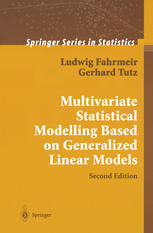

Most ebook files are in PDF format, so you can easily read them using various software such as Foxit Reader or directly on the Google Chrome browser.
Some ebook files are released by publishers in other formats such as .awz, .mobi, .epub, .fb2, etc. You may need to install specific software to read these formats on mobile/PC, such as Calibre.
Please read the tutorial at this link: https://ebookbell.com/faq
We offer FREE conversion to the popular formats you request; however, this may take some time. Therefore, right after payment, please email us, and we will try to provide the service as quickly as possible.
For some exceptional file formats or broken links (if any), please refrain from opening any disputes. Instead, email us first, and we will try to assist within a maximum of 6 hours.
EbookBell Team

4.7
36 reviewsTo get the data sets discussed in the first edition of this book, using R: install.packages("Fahrmeir")
Since our first edition of this book, many developments in statistical modelling based on generalized linear models have been published, and our primary aim is to bring the book up to date. Naturally, the choice of these recent developments reflects our own teaching and research interests. The new organization parallels that of the first edition. We try to motivate and illustrate concepts with examples using real data, and most data sets are available on http:/ fwww. stat.uni-muenchen.de/welcome_e.html, with a link to data archive. We could not treat all recent developments in the main text, and in such cases we point to references at the end of each chapter. Many changes will be found in several sections, especially with those connected to Bayesian concepts. For example, the treatment of marginal models in Chapter 3 is now current and state-of-the-art. The coverage of nonparametric and semiparametric generalized regression in Chapter 5 is completely rewritten with a shift of emphasis to linear bases, as well as new sections on local smoothing approaches and Bayesian inference. Chapter 6 now incorporates developments in parametric modelling of both time series and longitudinal data. Additionally, random effect models in Chapter 7 now cover nonparametric maximum likelihood and a new section on fully Bayesian approaches. The modifications and extensions in Chapter 8 reflect the rapid development in state space and hidden Markov models.